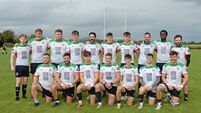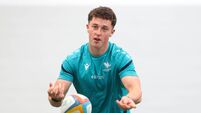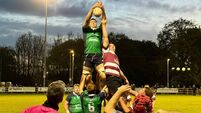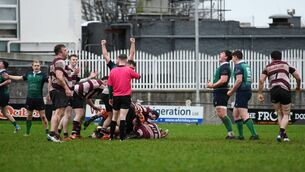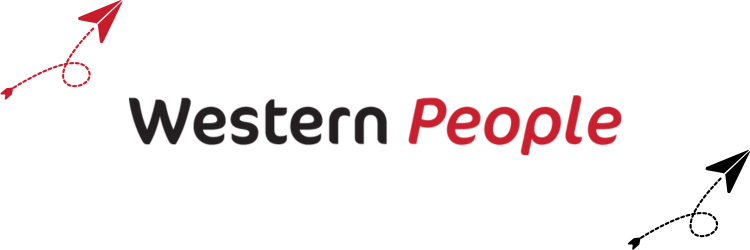Ireland under pressure to renew squad

Ireland captain Caelan Doris is tackled by Japan's Naoto Saito during last Saturday's 2025 Quilter Nations Series match at Aviva Stadium, Dublin. Picture: INPHO/Gary Carr
Two weekends of the four in the November series of rugby internationals are down, and they could hardly have been much different for Ireland.
The hullabaloo around the meeting between Ireland and the All Blacks at the iconic Soldier Field gave the match a real gravitas given the venue and the recent history between the sides. Compare that, then, to the low-key build-up to last Saturday’s meeting with Japan at the Aviva Stadium, with the odd 12.40pm kick-off time in Dublin leaving the match largely devoid of atmosphere.
Aside from the hype (and lack of) around these fixtures, there has been a consistent them to the Irish performances. They’ve been underwhelming.
There are mitigating factors, not least the fact that many of the Irish players are a little rusty at test level. Having had a busy summer with the Lions tour to Australia – sixteen Irish players were in the squad – many of those same players have had a slow return at club level, understandably, leaving them playing catch-up coming into this series of matches in the international arena.
Consider, too, that this is an Irish side beginning to turn its attention to another World Cup, fast approaching in 2027, and therefore the transition from the 2023 side to the 2027 is in mid-stream. Some incoherence is acceptable when certain players and systems are being trialled for the first time.
You could argue that the laser-like focus on the World Cup cycle in rugby is wrong and does a disservice to competitions that happen more frequently, such as the Six Nations, and the bigger international test matches that happen in the autumn time in this part of the world. However, when it comes to Ireland, it’s the be all and end all because it is the only itch that remains unscratched.
There was a time when you’d have given a hell of a lot to see Ireland prosper in a Six Nations campaign, not least win a title or better still a Grand Slam. Winning the Triple Crown at Twickenham is 2004 was, at that stage, a monumental achievement. Then attention turned to trying to win a Six Nations title and, when it happened along with a grand Slam in 2009, it helped alleviate a lot of the pressure around achieving that. But, after claiming titles again in 2014 and 2015 before completing two more Grand Slams in 2018 and 2023, it’s fair to say the sense of novelty around the Six Nations has dissipated to a large degree.
It’s a similar thing with regard to getting the better of New Zealand, having done so in 2016 for the first time and then continuing their progress with a series win away to the All Blacks in the 2022 series Down Under. That ceiling too has been smashed, as has achieving the status of being the number one side in the world rankings which, as a country, we’ve learned counts for little when it comes to the business of winning a World Cup.
So, the showpiece tournament every four years has become the one which Ireland wants, more than anything, to succeed at. Having yet to reach a semi-final, Ireland’s record remains a major blot on the copybook of a nation that has progressed so much over the last 25 years.
To achieve that breakthrough in 2027, there’s a belief that Ireland will need to unearth some new players in the interim to add to the squad and give matters a boost heading to the tournament, which will take place in Australia. On the evidence of what we've seen so far this autumn, the bulk of the squad – and more pertinently those occupying key positions – will be similar enough to what was on show in France two years ago.
Eight of the team that started against New Zealand in Paris two years ago started the re-match in Chicago last weekend. There were only two in the side that started against Japan, that being an ideal fixture to rotate things against a side ten places below Ireland in the world rankings.
Ireland's strongest side still relies on Jamison Gibson Park setting the tempo from scrum half, and it still relies on the power of Tadhg Furlong in the scrum. The best centre partnership available to Andy Farrell has consistently been Bundee Aki alongside Garry Ringrose and Hugo Keenan is the first choice full-back. Problem is, time is not on the side of any of those players. Gibson Park is already 33, Furlong is 32 and Aki is 35.
Farrell will attempt to unearth other talents in the interim, and give game time to those in need of it to earn their crust at test level, but handing a debut to 32-year-old Tom Farrell last weekend, as deserving and all as it is at this stage, is perhaps reflective of a lack of depth within the Irish ranks when it comes to young players coming on stream as once was the case.
Refreshing the team is necessary, of course, but there is a nagging sense that 2023 may have been Ireland’s sliding doors moment: that it is increasingly looking like the big moment for Ireland to have made that World Cup breakthrough.
In order to develop a greater depth and more options, Ireland have to place their faith in more inexperienced players to build a wider squad. Persisting with Sam Prendergast in the number ten shirt last season was part of that process and will hopefully lead to longer term rewards, though Jack Crowley would appear to be first choice for now.
Ireland know better than anyone that positive results in between World Cups doesn't count for a huge amount when it comes to the tournament itself. That said, with a powerful South Africa on the horizon this autumn and a challenging spring ahead in the Six Nations, Ireland need to find some form if they're to retain their place among the teams capable of making a meaningful impact in Australia in two years’ time.
